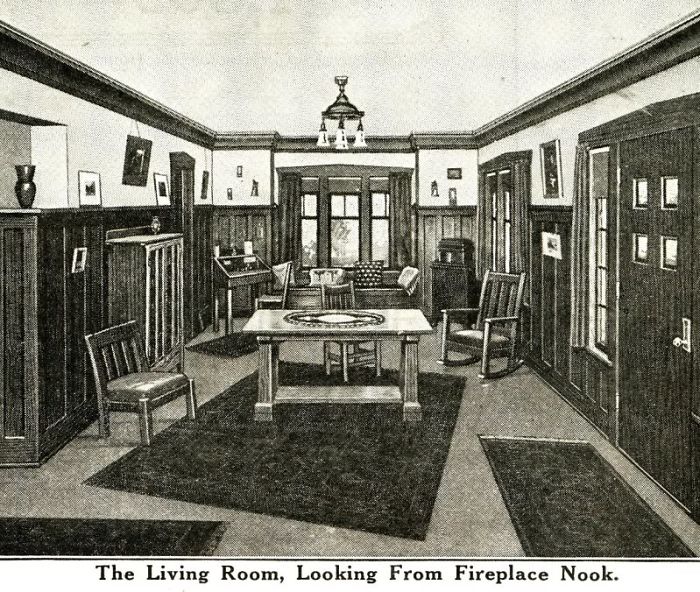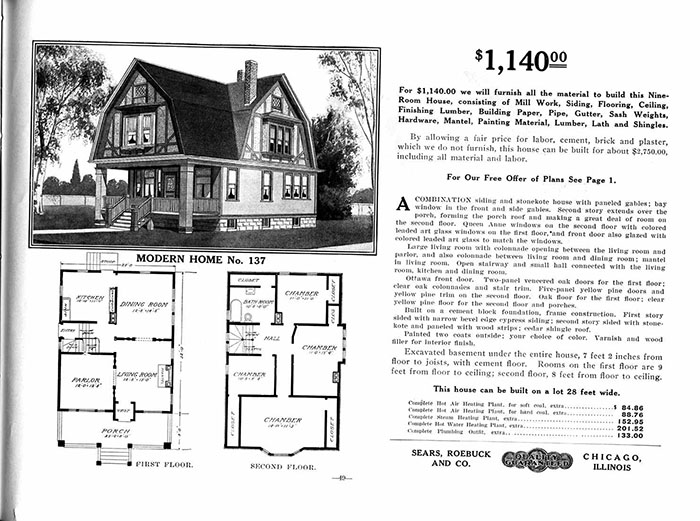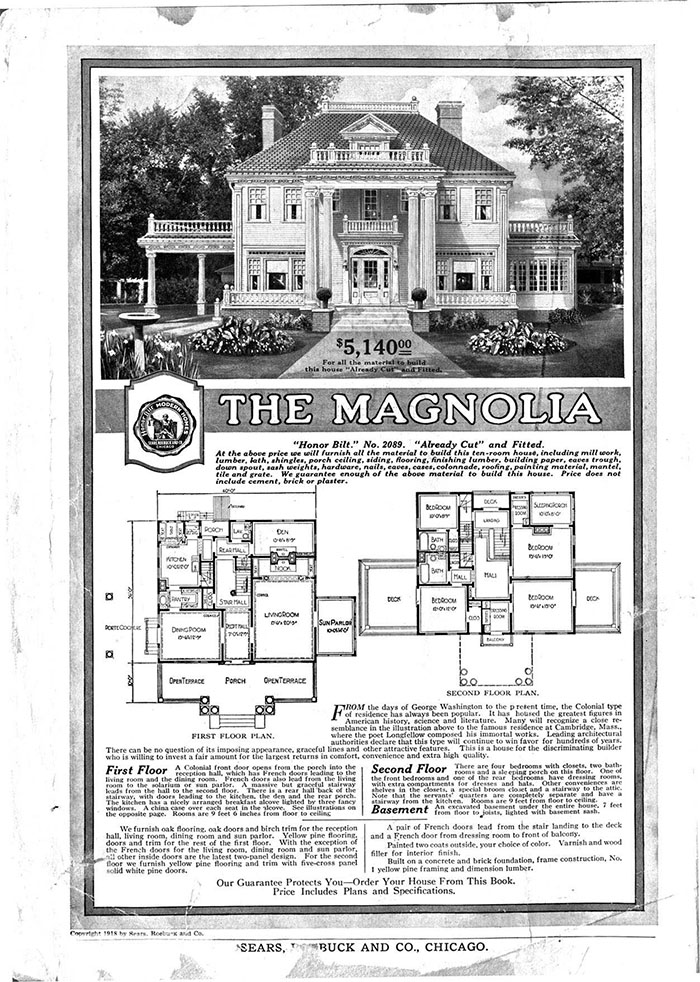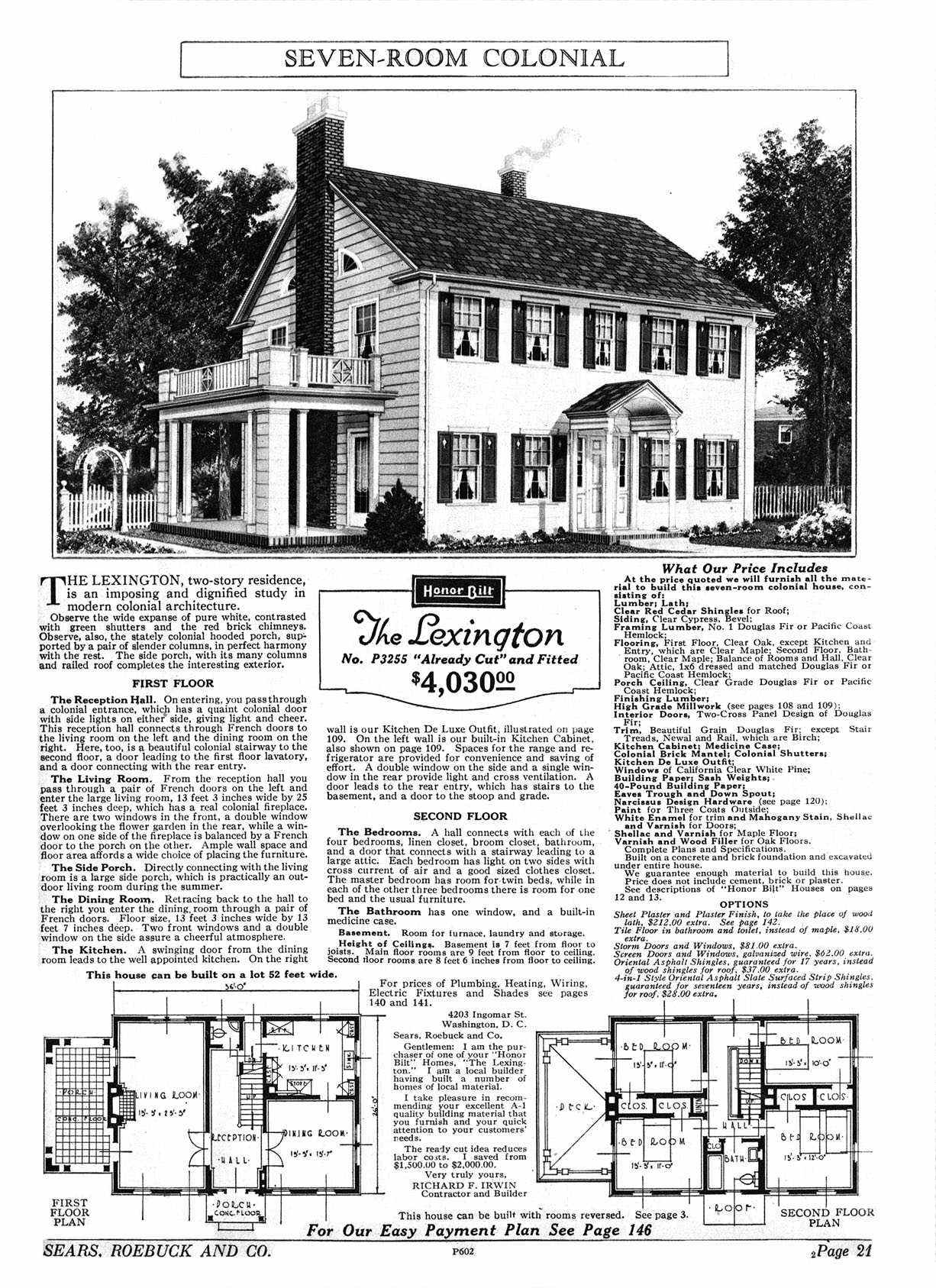While these days we don’t think twice about ordering all kinds of things online, with giants like Amazon offering pretty much anything you could possibly imagine shipped to your doorstep, the mail-order concept goes back much further than you might think, and you could even get an entire house delivered by mail.
Image credits: Sears Archives
Image credits: Sears Archives
Image credits: Sears Archives

Image credits: Sears Archives
Sears, once the biggest retailer in the U.S. but which recently filed for bankruptcy, revolutionized home-ownership and kick-started the American dream for thousands by offering affordable ‘kit homes,’ arriving by railroad in pieces that people would put together themselves. With 400 types to choose from in a range of budgets, the mail-order homes proved to be a massive hit, with 75,000 built all over the USA between 1908 and 1940.

Image credits: Sears Archives
The scheme was an impressive foreshadow of today’s Amazon and Ikea, done on a massive scale and over a century ago. Sears’ iconic catalog was a cultural phenomenon of the times, with a full one-fifth of the population signed up to the 1,400-page tome, offering more than 100,000 items to be delivered to your door.

Image credits: Sears Archives
After receiving and building your kit home, which Sears promised could be done without a carpenter and with only rudimentary skills in less than 90 days, you could then furnish it with brand-new Sears goods, including modern conveniences like central heating, indoor plumbing, and electricity.

Image credits: Sears Archives
The accessibility of these homes changed the face of American life, creating independence for newlyweds and young families that were more accustomed to living in multi-generational homes. Many of them are still standing today, a testament to the quality of the materials as well as the DIY skills of many families back then, and have become buildings of historic interest.

Image credits: Sears Archives
The quaint, early 20th century designs are reminiscent of the movie Pleasantville, and have been known to fetch as much as $1 million on the real estate market!

Image credits: Old House Online
But how do you know if you live in a Sears kit home? The records for where and when many of the houses were delivered have long disappeared, but there are a growing number of enthusiasts that travel the country, searching them out. It is estimated that around 70% of the original Sears kit homes built are still standing today, many of which are located near to the rail yards they were delivered to.

Image credits: Old House Online

Image credits: Sears Archives

Image credits: Old House Online

Image credits: Old House Online

Image credits: Old House Online

Image credits: the charlotte observer

Image credits: RealHotSauceBoss

Image credits: Sears Archives

Image credits: Sears Archives

Image credits: Sears Archives

Image credits: Sears Archives

Image credits: Sears Archives

Image credits: Sears Archives

Image credits: Sears Archives

Image credits: Sears Archives

Image credits: Sears Archives

Image credits: Sears Archives
How to know if your house is from Sears catalog:
The Arts And Crafts Society lists the following tips to help you identify whether your home might be a Sears kit home or not:
Look for stamped lumber on the exposed beams/joists/rafters in the basement, crawl space or attic.

Image credits: arts-crafts [info in the links]
Inspect the back of millwork (moldings and trim) for shipping labels.

Image credits: arts-crafts
Check the home’s floor plan, footprint (exterior dimensions) and room size, using a field guide to Sears Homes, such as “Finding The Houses That Sears Built” (2004, Gentle Beam Publications).

Image credits: arts-crafts
- Visit the courthouse and inspect old building permits and grantor records.
- Inspect plumbing fixtures for marks, such as “R” or “SR”.
- Look for markings on back of sheet rock.
- Unique column arrangement on front porch and five-piece eave brackets.
- Square block on moldings at staircase landings, where moldings meet at odd angles.
- Verify your home’s construction date. If your home was not built between 1908 – 1940, it can not be a Sears Home.

Image credits: Sears Archives

Image credits: Sears Archives
from Bored Panda http://bit.ly/2RTj2XZ
via Boredpanda
